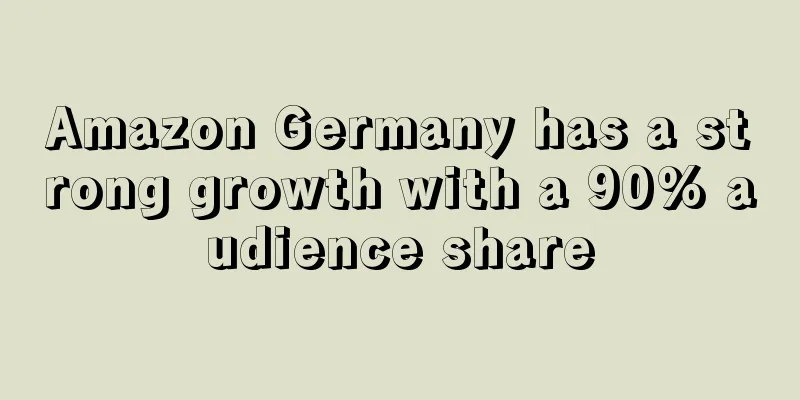Sellers, get it now! DHL proposes four e-commerce supply chain trends for 2021

|
DHL, a subsidiary of global logistics company Deutsche Post DHL Group, has identified four overarching trends impacting the U.S. e-commerce sector based on DHL’s U.S. customer feedback and the development of the lightweight parcel industry after the pandemic .
Four market trends identified include: the need for multiple carriers, capacity constraints, cybersecurity and data privacy issues, and the resurgence of brick-and-mortar stores.
The need for multiple carriers
DHL has found that the multi-carrier approach is becoming more and more popular, especially after the epidemic . In 2020, some online merchants found themselves without logistics partners. Due to the capacity constraints of the logistics network , some logistics operators could not bear too much cargo, so many logistics companies restricted the cargo volume and added surcharges , and many online merchants had to face the resulting logistics problems.
DHL expects that the volume caps and surcharges for logistics operators will remain unchanged throughout the year. DHL said that by taking a multi-carrier approach and developing shipping strategies ahead of the second half of the year, online retailers can better mitigate unexpected disruptions and changes in market conditions .
Capacity constraints remain
Capacity was a topic of concern for logistics operators in 2020, and DHL suggests it should also be a topic of concern for e-tailers in 2021. As consumer online spending growth continues, the capacity crunch in 2020 is expected to continue into 2021, and logistics operators are unlikely to gain additional safety margins in the fourth quarter of this year. DHL predicts that online sellers may take a different approach in the coming year, namely by paying a certain premium to ensure capacity during the holiday peak.
Cybersecurity and data privacy concerns are growing
The pandemic has exposed the supply chain vulnerabilities and online security shortcomings of many online merchants. For physical stores with online businesses, accelerating their digital transformation means that many stores must invest in real-time cyber threat intelligence and conduct centralized monitoring and risk analysis.
According to DHL, the most agile and resilient sellers are also adopting unconventional strategies to identify vulnerabilities in their companies through bounty programs, which invite white hat hackers and security researchers to test the security of their systems. In light of the increasing number of data breaches and security threats, DHL said retailers must implement stricter security measures and controls to ensure the best secure online shopping experience.
Reinvention of the physical store
Those physical stores that had to close due to the epidemic have changed their marketing models. In addition to permanent closures, some have switched to online sales and offline delivery . Under this model, traditional retail stores are transformed into local logistics centers.
According to DHL, these stores offer customers the option of curbside pickup or delivery while reducing pressure on retailers’ primary logistics centers. With the advent of buy online and pick up in-store ( BOPIS), the footprint and technology of parcel lockers are growing globally. For online retailers, parcel lockers are gaining traction with reduced costs , convenience and the ability to safely get products into the hands of consumers .
Lee Spratt, CEO of DHL eCommerce, said: “Throughout 2020, we have successfully navigated the pandemic by working closely with our customers and scaling our forecasting processes to help them better plan and overcome future obstacles. ” Seller DHL E-commerce logistics |
>>: Ozon, a Russian e-commerce company, has made a comeback with its first profit in 20 years
Recommend
What is Eloquii? Eloquii Review, Features
Eloquii is an online retailer of plus-size women&...
What is Lejian Cross-border? Lejian Cross-border Review, Features
Lejian Cross-border, a brand of Guangzhou Lejian T...
Sellers: Panic, Brazil's $50 tax-free policy for cross-border purchases has been cancelled? Here comes the latest development
In the past week, several self-media outlets have...
SF Express will increase the proportion of international air cargo, adding new support to sellers' shipping channels
According to the Securities Times, SF Holding rec...
What is Target? Target Review, Features
Target (Target Corporation) is located in Minneap...
More than 90% of Britons consider ethical factors when shopping
On July 5, according to foreign media Internet Re...
Nanning hub center is online & seven city collection points are open, and diversified logistics solutions are further expanded!
Relying on the Cainiao network system, Lazada con...
Temu sues shein in the US, escalating cross-border e-commerce war
The war in the cross-border e-commerce circle has...
What is BauBax? BauBax Review, Features
Baubax is a travel jacket brand dedicated to prov...
Income doubled! Operations has a new goal
With the continuous development of cross-border i...
What is Fireblocks? Fireblocks Review, Features
Fireblocks is an easy-to-use platform for creatin...
Indonesia's electronic product sales soared during the epidemic
Since the outbreak of the epidemic , the demand f...
US toy sales increased by 11% in Q3, and the product ranking list is released!
During the epidemic, consumers need to spend a lo...
What is Xingsheng Group? Xingsheng Group Review, Features
Hints Group consists of Hints Consulting Group Li...
What is ManoMano? ManoMano Review, Features
ManoMano was founded in 2013 by Philippe de Chanvi...









